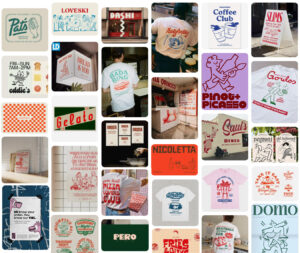Ten things we’ve learnt in a decade of Thread
Advice for our competitors! by our creative director, Ben Weldon It’s been a whole decade since Thread was born in Shanghai and it’s been a thoroughly enjoyable bumpy ride! With so much to learn and so few people to learn from, we’ve had to learn as we go. From the early days when Louise and I founded the company, to today’s new management, Adam and Justine, there are so many valuable lessons worth sharing. Here are 10 of our favourite…
- Make a family Probably the single most important lesson we’ve learnt at Thread is to nurture the culture. It’s created by choosing people that fit and who will look after one and other. Although the people change and the dynamic morphs and changes over the years, our core values and personality is a constant.
- Be leaders in an industry (or four) There is a temptation to take every client that asks you for something. However as a small studio, you can’t possibly have in depth knowledge about every industry. It takes years to build up insights and know how in an industry, which will allow you and your team to give advice; besides it’s expensive to learn a client’s industry for every project. Personally I believe industry categories are more valuable than skills. If you own a skill, you’ll be outsourced to by the 4A’s and that’s no fun.
- Don’t let 4A’s outsource to you! Many small studios have made a great deal of money providing services for the big guys, for Thread this arrangement just never really worked, we’re creative, we have our process and that’s a culture clash if the company engaging you, just needs your resources and not your creativity
- Never compete on price (unless it’s you and the other guy). Trying to be a budget version of an international agency never sends a good message to those considering working with us. “We’re like a cheap such and such” doesn’t sound good however you spin it.
- Measure Everything A new lesson I must concede, but what a difference it makes. We use Harvest time tracking software for every project, and now measure just about every number we can.
- Weather the storms A lesson for every business, and one that is so hard to follow. When quiet months cause you to worry about payroll it’s tempting to take smaller projects with poorly planned scope. Fast forward to the following month, things pick up again and all of your valuable resources are tied up working on the poorly scoped, loss-making small stuff. *tip for clients, try and engage an agency when their not busy!
- Teams have critical mass Perhaps the most interesting on the list is team size dictates retention rate. Over the years we’ve been many things and had production teams, tech teams and of course a design team. We’ve found that fewer than four just doesn’t last. If you’re thinking of adding a team with specific skills to your business, it’s worth thinking through how they’ll learn from one another, rise up and replace from the bottom. Too few and the only option is to look for a job elsewhere.
- Set expectations for everyone. In the early days I’d tell people that we’d make some cool stuff for some money, invariably that would work. Sometimes however, a few weeks down the line, we’d made a dancing cat animation and they were expecting a logo for an investment consultancy. Well maybe not quite that bad, but the closer you can get to agreeing what the design will be before you start designing the better. Much the same goes when setting expectations internally, vague job descriptions make for grumpy team members, which make a dysfunctional family.
- Have a functional office space We’ve had a few different layouts over the years, and it makes a big difference. We can confidently say the best way to structure a design studio is to have everyone in one room facing away from each other (screens facing the center of the room). After years of working dinner table style, I can only sing the praise of this set up, despite us only discovering it by accident due to our limited space.
- Know how, and then don’t touch! Having functioned in just about every role in the company, including ayi, programmer and accountant, I know how to do what I shouldn’t be doing. That said, it’s hard to resist the temptation to get stuck into designing beer bottle labels every now and then.




